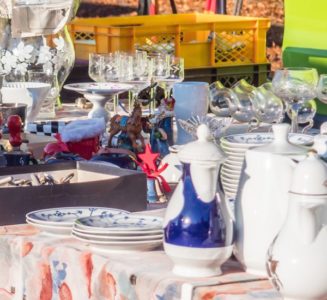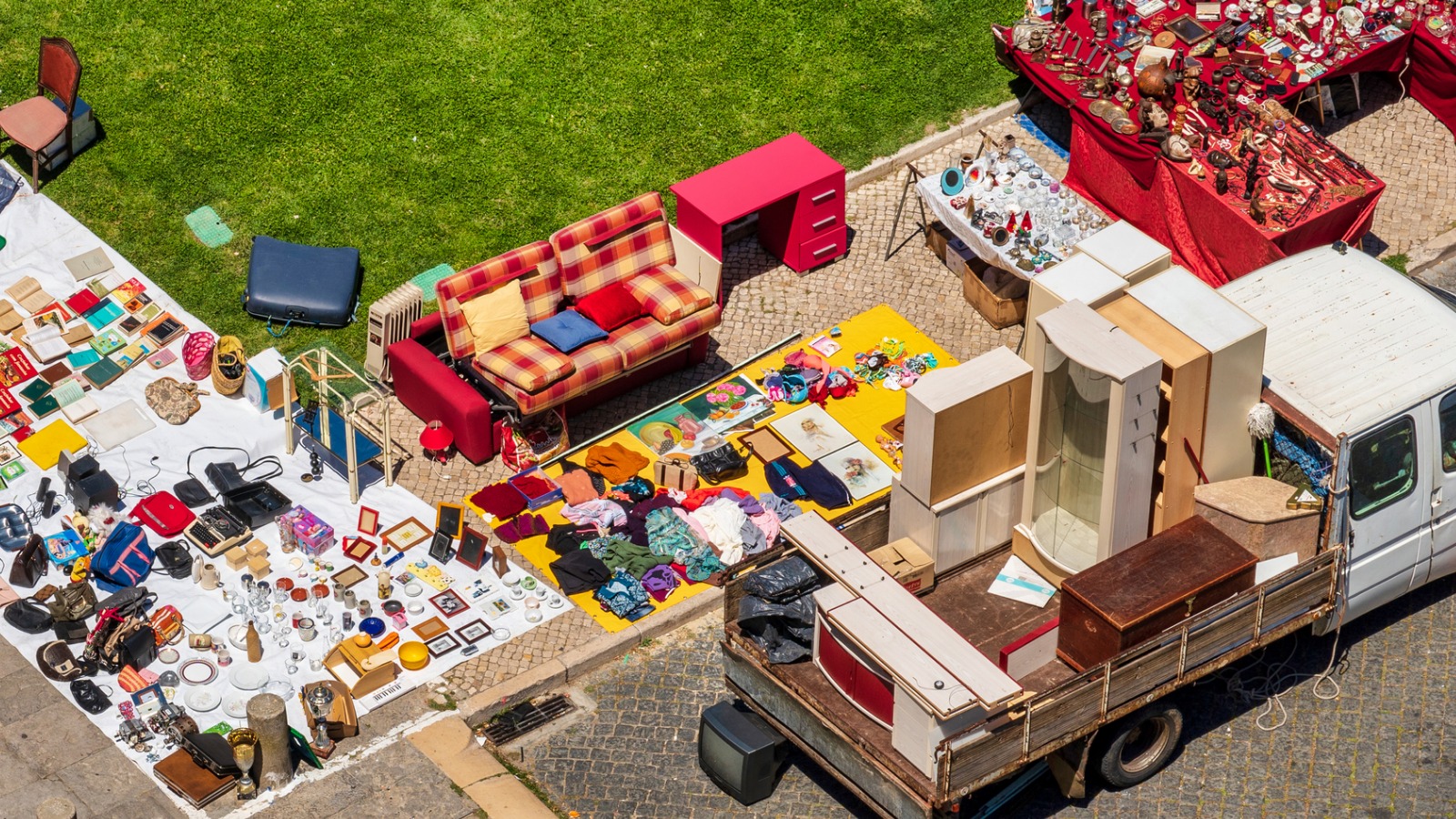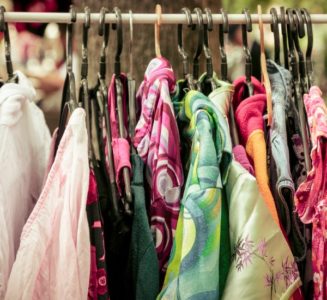Many people make a living from markets. Others take the opportunity to make some cash from their hobby or side business. Markets can even be a good way to get motivated to declutter. You can often sell your second hand items.
Find out how to do a market stall and some of the common mistakes to avoid.

Markets: A brief history
There is evidence of markets stemming back almost as long as the human race itself.
According to Wikipedia, the earliest bazaars are believed to have originated in Persia. From there, they spread to the rest of the Middle East and Europe. Middle Eastern ‘bazaars’, as they were known, were typically long strips with stalls on either side and a covered roof designed to protect traders and purchasers from the sun.
European markets were initially informal and unregulated but eventually they became more systemised. In Medieval times, increased regulation and measuring practices reassured people they were getting value for money.
As Wikipedia shares, markets vary around the world. For some communities, a daily trip to the market is essential for the evening meal. Other markets have evolved to be more about selling goods than produce. In Asia, morning markets sell food while night markets are more likely to display gifts and trinkets.
Many global markets are now recognised for their cultural and historical significance. They have become tourist attractions in their own right.
Markets in Australia
In Australia, while some markets offer staples, the modern market experience tends to be focused on gourmet victuals and giftware. Farmer’s markets have recently enjoyed a resurgence in popularity as people seek fresh, local produce. In addition, organic food markets are now popular in many communities.
Australia’s oldest food market is Prahran market in Melbourne, which has been continuously in operation since 1864. Also in Melbourne, the popular Queen Victoria Market was constructed in 1869.
The origins of Sydney’s Paddy’s Markets in the CBD date back to 1834. The suburb of Parramatta’s first fair/market is said to have been organised by Governor Macquarie and held on 13 January 1813.
From Hobart’s trendy Salamanca markets to the iconic Fremantle Markets in Perth, almost every location in Australia has a market of some sort. These events continue a proud tradition of people coming together and sharing the best they have to offer.
Popular markets on the Central Coast
The Central Coast is home to many popular markets. The following are some of the locations where you’ll find regular collections of stalls.
1. Umina Beach Markets
This market is filled with unique and quirky stalls, where people can explore their creative and whimsical sides. Indulge your senses with visual arts, live buskers, delicious foods and vegan meal options.
Visit: https://www.lovecentralcoast.com/events/umina-beach-markets
Dates: Monthly on the 3rd Sunday
Location: Peninsula Recreational Precinct near Umina Beach Surf Life Saving Club
2. The Entrance Lions Club Market
The Entrance Lions Club Market features 20–25 stalls offering clothes, jewellery, pet products and food.
Visit: The Entrance Lions Facebook
Dates: Every Sunday
Location: Denning St The Entrance (Rear of the old Cinema)
3. Avoca Beachside Markets
Over 90 stalls of beautifully designed arts and crafts, jewellery, textiles. Avoca Beachside Markets also offer organic and fresh produce, and international food.
https://www.fixxevents.com.au/avoca-markets-info/
Dates: Every 4th Sunday
Location: Heazlett Park, Avoca Beach
4. Terrigal Beach Markets
Support local makers, craftsmen, artists, designers, musicians & the do-it-yourself-ers on the picturesque foreshore of Terrigal Beach.
Visit: https://www.terrigalbeachmarkets.com/
Dates: First Saturday of the month
Location: Terrigal Esplanade next to the beach, Terrigal
5. Long Jetty Markets
Enjoy a waterside stroll, picnic, bike ride and then shop til you drop followed by refreshments at one of Long Jetty’s popular bars, cafes or restaurants.
Dates: Last Saturday of the month
Location: Tuggerah Parade Foreshore, Long Jetty
6. Terrigal Antique & Vintage Fair
Mark your diary for this quarterly event. Fabulous stalls sell antiques, vintage, retro, shabby chic, industrial, up-cycled vintage, vintage clothes, old wares, collectables, rustic relics and more.
Visit: https://www.terrigalantiquevintagefair.com/
Dates: Held quarterly in February, April, August & October
Location: Lions Community Hall – 8 Russell Drysdale Street , East Gosford.
How to do a market stall
Market stalls are a good way to make some extra money or even generate a steady income. If you’re wondering how to do a market stall , read on.
You can sell your preloved items or handmade clothing creations at markets. Many jewellery brands had their start as market stalls. Artisanal food producers also frequent markets to see how people respond to their products
What you decide to sell is up to you. The benefit of markets is that if you don’t get a lot of buyers, you aren’t committed to an ongoing expense. Generally, you pay a stallholder’s fee on the days you show up, not on an ongoing basis. However, some markets offer a discount for regular stallholders.
For car boot sales and swap meet style markets, it is unlikely you will need a permit to sell things. However, before you set up a stall selling wares or food, you should check you have the necessary licenses.
According to the Australian Government, “Licences and permits are important to help protect you and the investments you’ve made in your business.” For example, no matter what food you are selling, you will at least need a temporary food stall license. These are available from most local councils.
Most regular markets offer the option of a regular or one-off stall. Those who make a living from markets will have a regular stall at all the local events. If you choose to do this, be willing to travel to various markets. You should quickly find your calendar is quite full.
Sell your second-hand belongings at the markets
Casual stallholders are almost always welcome at the markets. Get in touch with the organisers of your local market to find out how much it will cost to come along.
Before you set up a second hand stall, set aside some time to do a thorough clearout. Clothes, household and kitchen items can be added to the collection. Some families decide to do a garage-sale type stall and make some cash from pre-loved toys, books and kids’ outfits.
Give everything a wash or clean and an iron if necessary. If you can, invest in some uniform-looking clothes hangers, to give your stall a more professional look.
Ahead of time, you could share on social media that you’re setting up a stall. You may find some friends have items to add. They may also wish to come along and see if they can nab a bargain!
You can sort your things by category, e.g. dresses/coats/shirts/kitchenware, or by price. Have a ‘bargain’ bin of $2 items which people won’t mind rummaging through. Present other goods nicely so they are easy for people to see. Don’t forget to clearly mark prices, and if possible, have sizes clear so people don’t waste their time.
Decide ahead of time if you’re happy to negotiate on price. If you’re serious about offloading your things it may move items faster. Deals like fifty per cent off the second purchase could help in this regard.
Tips for how to do a market stall
Like anything, there is a wrong and right way to do a market stall. This is the case, no matter what you’re selling.
Timing and location
The pros recommend you try to get as close to the entrance as possible. People will spot you as they come in and if they see something they like they will probably circle back to you before they leave.
If you can’t get close to the entrance, consider sticking near the food. People slow down as they eat and you can catch their attention.
Some markets have strict regulations about what time you should arrive. Latecomers may not be permitted so set your alarm and have your car packed, ready to go. Being early will also help you select the best spot.
Looks matter
Even though your stall is temporary and your business very small, you should put the time and effort into looking great. Handwritten cardboard signs and grubby tablecloths will put people off.
If you plan to do a lot of stalls, being consistent with the way you present your stall will also make it recognisable for people who frequent markets. This includes having nicely printed signs which showcase your business name. You can also choose some colours for your business. Have a logo created and purchase some cheap bunting in a matching shade.
Presentation matters, even if you’re selling your own clothes. Make things clearly visible and well spaced out. Add labels and information so you don’t get caught up talking to every customer. Make prices clear on blackboards or tags which are easy to find.
Be social
This doesn’t mean saying hello, although that is important. Share your social media hashtags and account details. Ask your buyers to share their feedback or snap a pic of themselves with your creations.
If you have a website, display the link in a few places so people can find out more about your business.
Be friendly but not pushy
Speaking of saying hello, nobody likes a rude market stall owner. Greet people and offer a few words when they come by. However, avoid dumping an encyclopedia of information about your product on them. This can quickly overwhelm customers and they will seek out a quick escape.
Be prepared
The stalls with the best sale results not only have great products, they make it easy for their customers to make a purchase.
These days, it is not so hard to offer card-based payments, even from a remote location. Doing so will save people the trouble of having to scout for a cash machine. It will also prevent you from missing out on sales.
Come with plenty of change ready; most people bring $50 bills and they’ll walk away if you can’t accommodate them.
Offer carry bags to make it easy for your customers to carry their purchase. Where possible, choose the environmentally-friendly option over plastic bags.
Finally, have some kind of form so you can collect customer details if you don’t have what they want in stock. You could also use these details to start sending out a regular newsletter.
Offer variety
Cheap prices will entice people to stop at your stall but you don’t have to sell everything for next to nothing. Keep the cheaper trinkets at the front and have things at different price points. You should also sell a few different products to attract interest from a range of different customers.
As you become more experienced, you’ll understand which prices work best while also allowing you to make a profit. You’ll notice people aren’t always in the mood to spend a great deal at markets. Keep this in mind when you’re deciding what to sell.
How to have a great day
Working at a market stall all day is tiring but there are a few things you can do to have a better experience.
For example, pack for all weather. A jacket is as important as a hat. Bring sunscreen and a portable fan. Market days are long so invest in a small gazebo so you can stay in the shade.
Comfortable shoes are a must, as is some kind of chair so you’re not on your feet all day.
Although there should be food available, bring some of your own, along with water. If you’re lucky you will be too busy to get away and grab a snack.
Finally, security is also important. Some of your customers will pay cash and it can be easy to lose track of it or fall victim to thieving hands. A bum bag for cash is one idea, or you can keep two cash boxes. Have a small amount of money in one stash a lockable money box out of sight.
Another element to consider is insurance. Some providers offer a specific product for market stall holders. This will cover you in the event of someone being injured or becoming ill after their encounter with your stall.
As you get more experienced, you’ll discover how to do a market stall and get better results. In addition, regular customers will get to know your brand. You never know what this could lead to!




